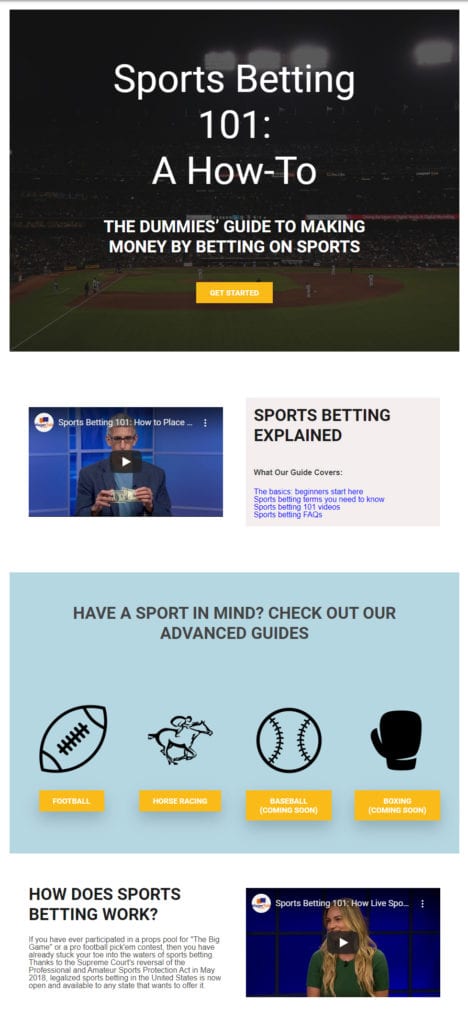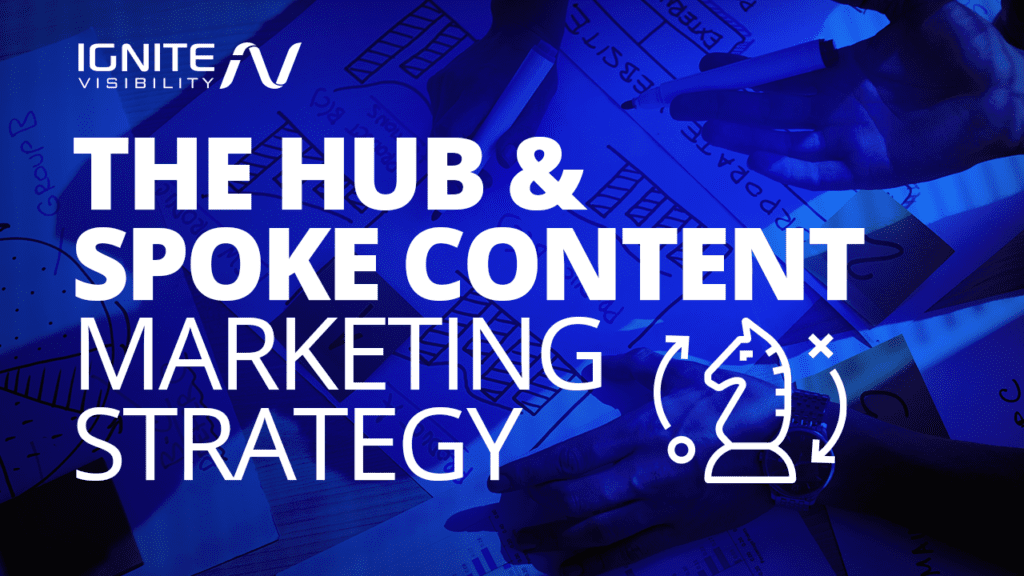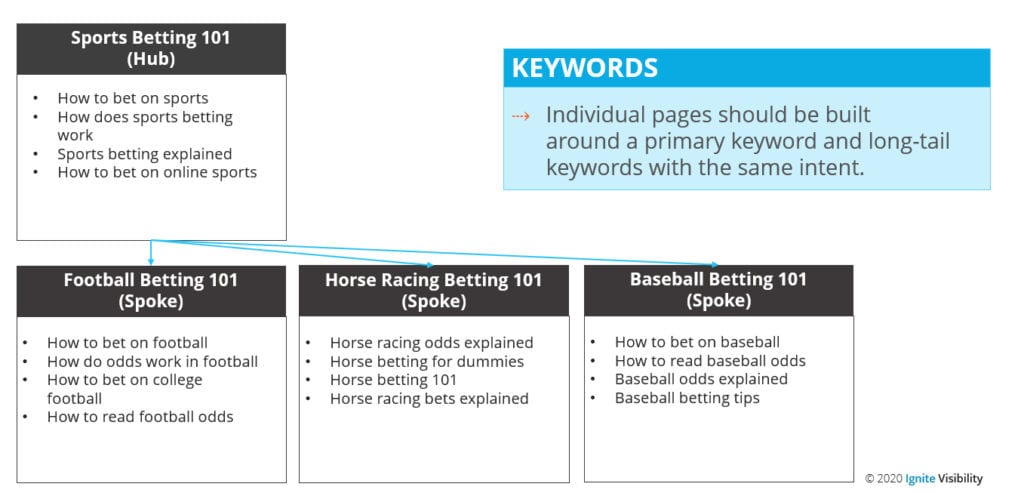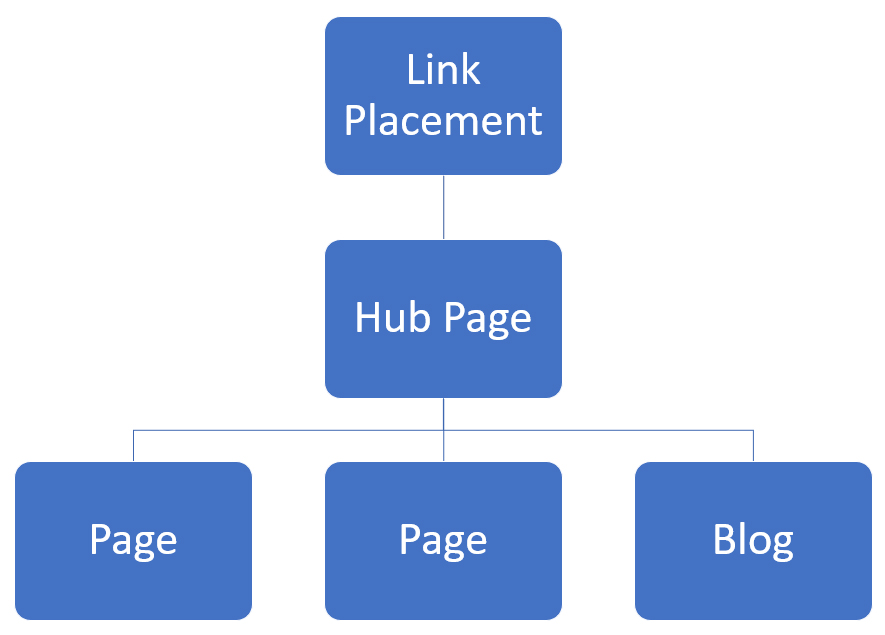Content hubs help silo your content, make prime link magnets, and support a network of related content.
Read this article to learn more about the content hub and spoke model for SEO, a powerful content strategy.
What We’ll Cover:
- The Benefits of the Hub and Spoke SEO Model
- How to Determine and Organize Your Hub and Spokes
- Content Hubs and Spokes in the Wild: Real World Examples
- Action Items For You, the Reader
The content hub and spoke SEO model is a simple way of siloing and organizing your content, improving internal linking, and better distributing external link equity that you earn through your linkbuilding campaigns. Best of all, it’s an easy strategy to execute. We’ll cover everything you need to know about content hub and spokes in this article.
At its simplest, a content hub is a primary resource on your website on a particular and specific subject. The spokes are supporting content pieces that are related to the topic of the hub. While these pages should not compete for the same search queries, the keywords are nevertheless related to each other.
Here’s an example of what a hub and spoke system might look like for a network of sports betting guides:
The Benefits of the Hub and Spoke SEO Model
There are three major benefits to the content hub and spoke model for SEO:
- Better content siloing
- Natural and organic internal linking
- Generation and distribution of link equity
1. Better Content Siloing
Keywords on a page and backlinks aren’t enough to rank well on Google, at least not systematically. Google also wants to make sure that your website is equipped to accurately and productively talk about the topic those keywords are related to. Content siloing is a way of providing Google additional context on what your website is about and whether it’s truly equipped to authoritatively discuss the targeted topic.
A hub and spoke organization helps connect related content, allowing Google to better understand your website’s expertise, authority, and trust on the topic. By seeing what other queries you rank for and how well you rank for those, Google can better determine whether an individual page should rank higher or not.
In other words, content hubs and silos help scale your content production as it relates to ranking on organic search. The better you rank for the hub, the better you will rank for the spokes — or vice versa.
2. Natural and Organic Internal Linking
Internal links help users and crawlers navigate your site, discover new pages, and spread link equity and other E-A-T signals to other parts of your website. If you want similar content to rank well, it makes sense to network these through internal links. Hub and spoke organization helps in this area because it makes such a network natural.
The hub page should link to all the related content, including written content, videos, infographics, and other forms of digital consumables that relate to the topic. One of the main intents of this strategy is to make it easy for users and crawlers to find all of this related content, and the purpose of the hub is exactly that.
The spokes should link back to the hub and to other spoke pages, as well. Leverage your related videos and infographics where you can, not just on the hub page. Imagine a user (or a crawler) lands on one of your spokes, rather than the hub. You still want that person (or bot) to be able to easily find and access related content, right?

Source: Anum Husain, Topics Over Keywords
3. Generation and Distribution of Link Equity
Your hub page is a link magnet. Between itself and the content it internally links to, it’s a great resource and is likely to be referenced by others in the same space. As these links are placed and the backlink profile goes, the equity manufactured by these external links will spread throughout your website through the internal links.
The hub page must also promote other link magnets. These include infographics, related tools, white papers, and other high value assets that people in your space reference and link to from their own websites. By creating more exposure to your hub page, you’re also driving exposure to other related high-value resources and, as a result, you generate more topically relevant backlinks — which, remember, are among the most important.
As links are placed and as these drive link equity to your site, the internal link structure will help spread this equity across all of the spokes. This only increases your site’s expertise, authority, and trust and it drives these signals to all of the content that can benefit from it.
How to Determine and Organize Your Hub and Spokes
You’re sold on why you need to organize much of your content along hubs and spokes. Let’s talk about how to execute the strategy. I break the process down into three simple steps:
- Chunk your keywords
- Determine your hubs and spokes
- Publish, interconnect, and promote your content
Chunk Your Keywords
The first step to creating your first content hub and spoke network is to do keyword research. The best way to start is to think of topics instead of queries. Each topic has dozens, hundreds, or thousands of queries related to it, so it’s best to start with the topic and then explore the search landscape around it.
Let’s assume that we’re running some kind of financial company and that we want to rank for queries related to the topic “How Much Should I Save?” As it turns out, there’s a lot of variation in how people search for this topic, and not all variations are meant to find the same information. Organizing topical keywords around the same or similar intent is your next step.
Download all of your query data and start putting individual queries into lists of search terms looking for the same information. Ultimately, your lists might look something like:
As you organize your keywords, the hub and spokes become clear.
Determine Your Hubs and Spokes
The hub page will be the most general, highest level page. Continuing the finance example started above, the hub page in that scenario would cover “How Much Would I Save?”
The hub would then link to several spokes organized beneath it, including “How Do I Save Money?”, “How Much Should I Save by 21?”, “How Much Should I Save by 25?”, “How Much Should I Save by 30”, and “How Much Money Should I Save For Retirement?”. Your keyword research might also recommend “How Much Should I Save for College?” and “How Much Should I Save for a House?”
Note, some spokes may also act as hubs as well. For example, “How to Save Money” has a lot of variation and depth around it. Other ways of asking the same question include, “How Do I Budget?” and “How Do I Spend Less?” These will have variations that call for their own resources, including “How Do I Spend Less on Food?” and “How Do I Spend Less on Clothes?”
Publish, Interconnect, and Promote Content
If you publish all of your hub and spoke content quickly or simultaneously, the exact order doesn’t really matter. In general, in any case, you’ll want to start at the top and publish down, meaning produce the hub and then the spokes. The hub is the high-level overview of the overall topic and the spoke goes into specific subtopics, so publishing the hub first casts the widest net.
Publishing the hub first also allows you to immediately start promoting it. Leverage all of your branding and awareness channels:
- Email — e.g. your newsletter
- Paid social — namely Facebook, although platforms like Quora and Reddit may also be worth it depending on the topic
- Organic social
Promoting it through paid social is an especially effective tactic since your organic reach won’t be algorithmically limited — it’s also relatively inexpensive. Consider promoting to audiences likely to link back to your hub as a resource, including other people who work within your space and may not necessarily be customers. It’s worth it because you’re investing in infrastructure that will acquire more organic search for your website.
Content Hubs and Spokes in the Wild: Real-World Examples
Hub and Spoke Example 1: WagerTalk’s Sports Betting Guides

The hub is comprehensive and includes both video and traditional copy to explain the different parts and metrics to sports betting. They even include an infographic. At the end there are FAQs to better capture featured snippets and to occupy more SERP real estate with FAQs directly under their listing.
The one thing that I would change is the URL structure. Each guide is under a different URL structure. By organizing the spokes under the hub, you signal their relationship to each other more clearly to crawlers and make it easier for each page to support the other one.
Hub and Spoke Example 2: Tony Robbins’ Ultimate Relationship Guide

If I were to add to this hub and the other hubs on the Tony Robbins website, I would include non-prose content like infographics and, especially, video. Tony has great video content available and I would consider showing small clips from his products and events, not just to cater to users who prefer visual media but to promote those same products and events as well.
Regardless, The Ultimate Relationship Guide serves as a great example of a hub and spoke because of how it connects the user — and crawlers — with all of the available relationship resources on the site. It’s no surprise that along with the hub, all of the spokes are successful.
Action Items For You, the Reader
Your primary action item after reading this guide on the content hub and spoke model for SEO is to create your first hub and spoke silo on your website. Remember the process:
- Find all the keywords related to a topic and group them into sub-topics. Keywords with the same search intent should go together.
- Organize your hub and spokes along your keyword research. The hub should be the top-level resource and the spokes should get into specifics.
- Publish your hub and spokes and make sure all of your content is interconnected. Users (and Google) should get an idea of your expertise just by virtue of the volume of insight your website provides on the topic.
- Once your hubs and spokes are published, promote the heck out of them and start building an audience and a backlink profile.




